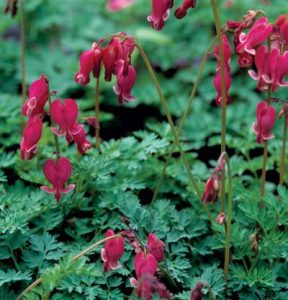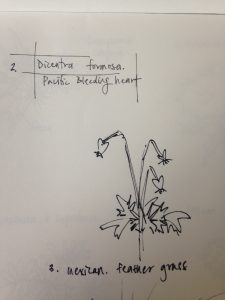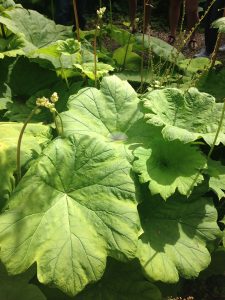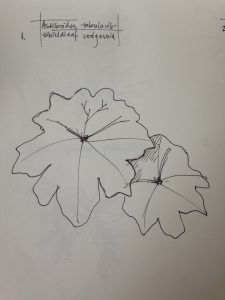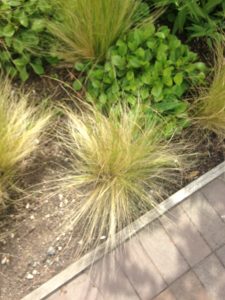
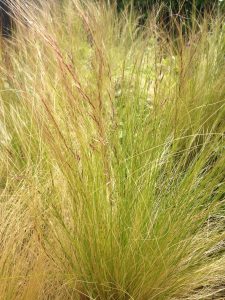
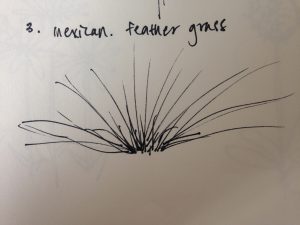
Common name: Mexican feather grass
Size, form, texture: awns are extremely long and thin, clumping, soft texture, 1- 3 ft tall, bedding plant in colder garden, in hotter temperatures a fast growing grass
Hardiness, origin, native ecology: wind pollinated, native to western North America and South America, potentially invasive in California but no in Vancouver due to wetter conditions, Z 8 plant, not frost hardy
Bud, foliage, flower and fruit characteristics: ornamental grass, no petals on flowers, fruit is the grain of the grass, coils when wet which encourages grain to spin and insert itself into the soil to seed.
Cultural and maintenance requirements and appropriate uses in the landscape: low water use, sun to part shade, requires well drained soil, does not like excess moisture (don’t overwater), looks good in pot, attractive whimsical appearance, borders or bedding, a fairly low maintenance grass in the right conditions, useful as low growing accent in landscape, deer tolerant.
